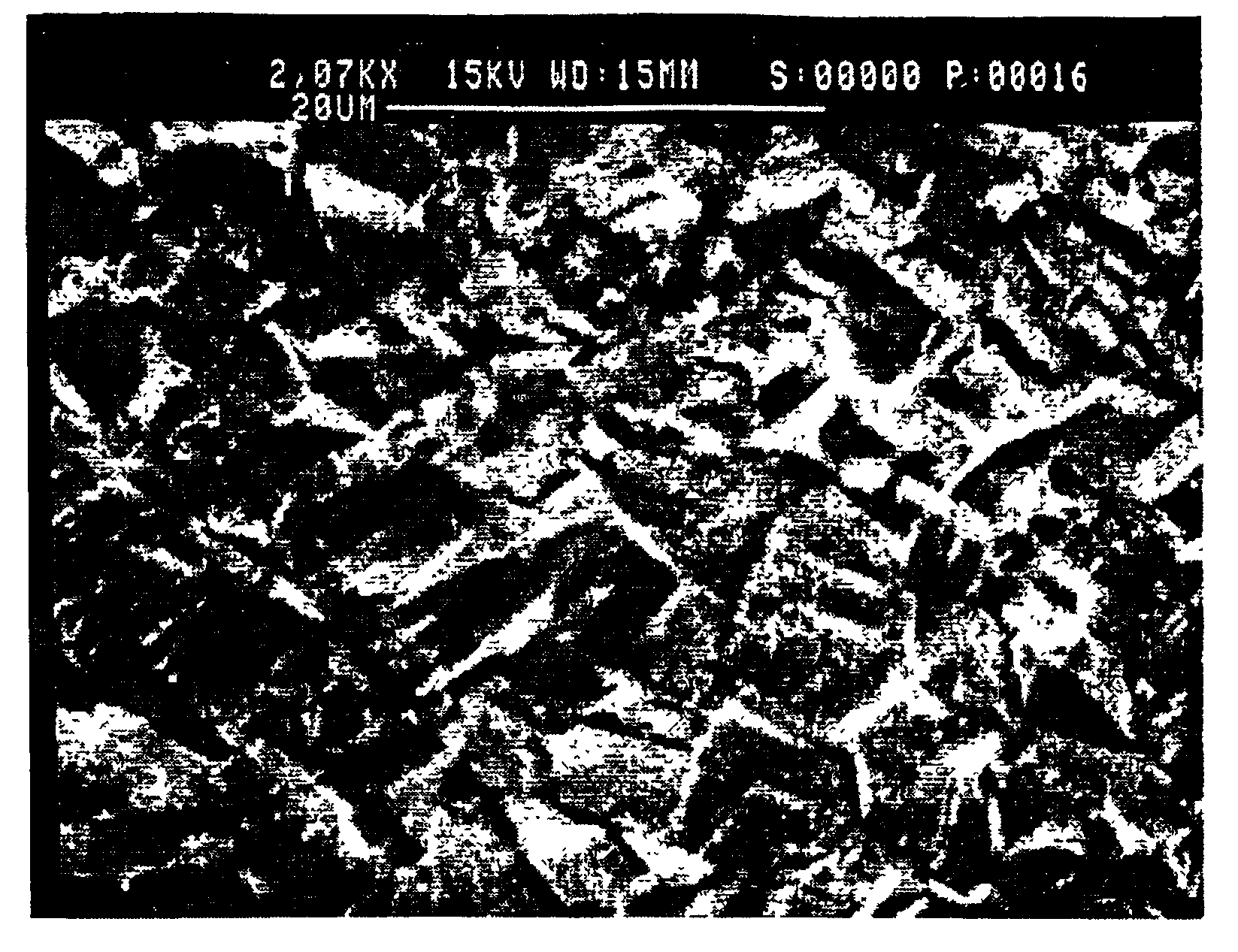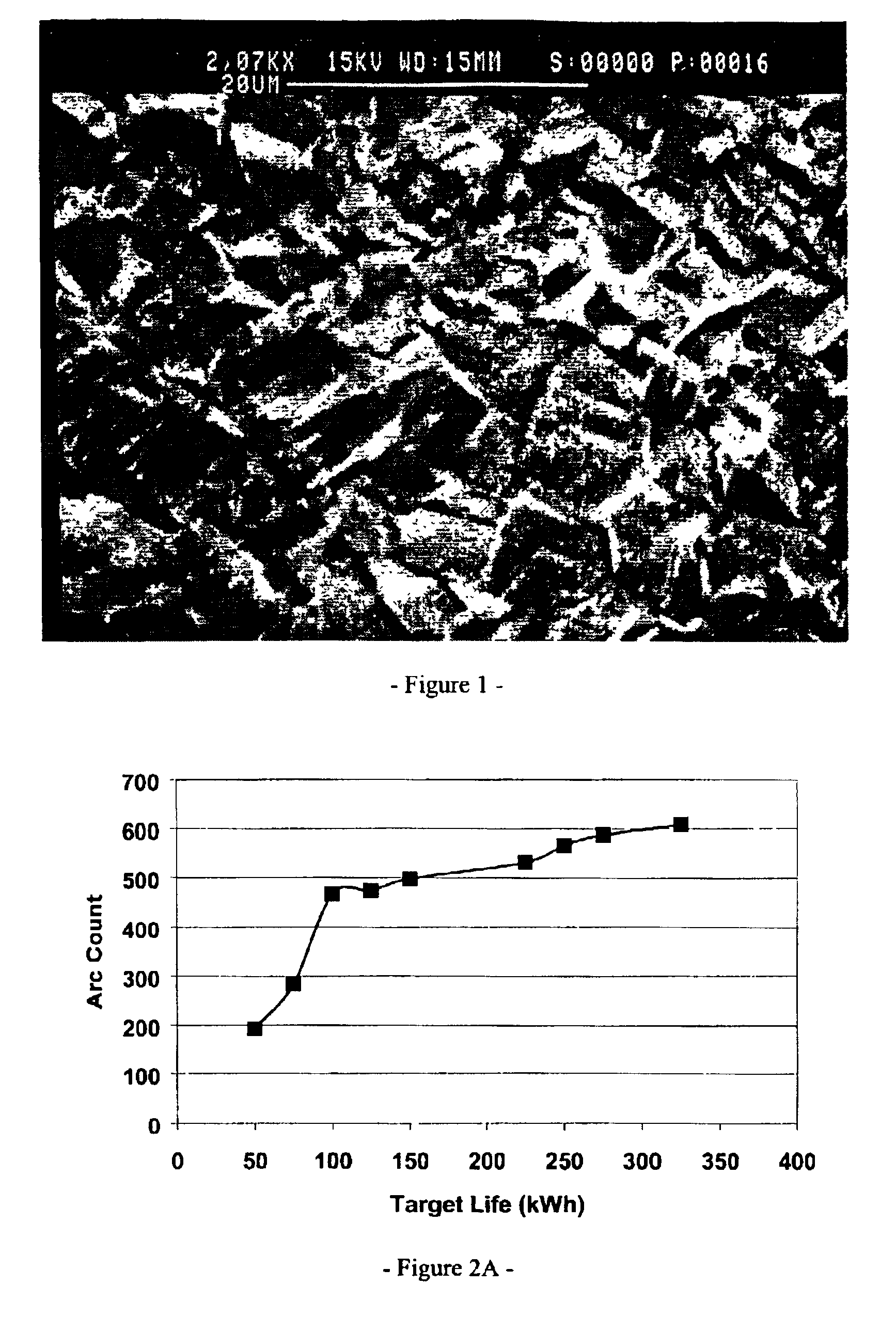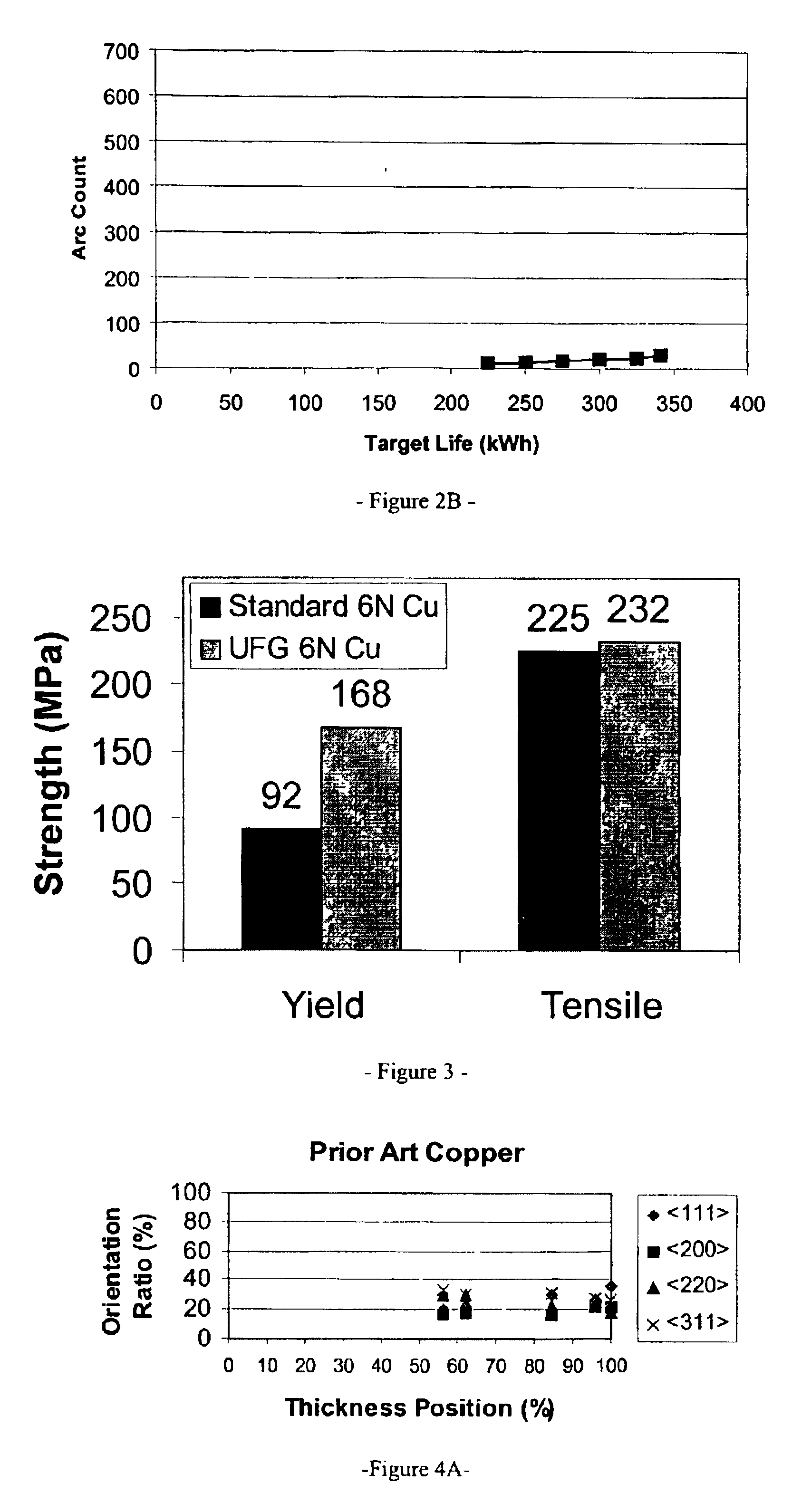Ultrafine-grain-copper-base sputter targets
a copper base and sputter target technology, applied in the field of ultrafinegraincopperbase sputter target, can solve the problems of inefficient cutting of circular targets from rectangular plates, limited success of conventional copper working processes in refining high-purity copper and copper alloy microstructures, and inability to achieve ultrafine grain sizes. sputter target arcing and the effect of improving sputter uniformity
- Summary
- Abstract
- Description
- Claims
- Application Information
AI Technical Summary
Benefits of technology
Problems solved by technology
Method used
Image
Examples
example 1
[0029]This Example used full-size RMX 12 Eclipse-style sputter targets fabricated from copper having a purity of 99.9993 percent. The final target blank dimensions are a diameter of 12.0″ (30.5 cm) and a thickness of 0.437″ (1.11 cm). Table 1 provides the manufacturing process specified for this target. In the cryogenic-pressing step (step 2), an operator immersed a 5.0″ (12.7 cm) diameter by 3.75″ (9.53 cm) long workpiece in liquid nitrogen until visible boiling was no longer observed; the workpiece was then at a temperature of approximately 77 K or −196° C. Re-cooling the cryogenically processed billets between each pressing step ensured that the imposed deformation took place at a temperature as close to −196° C. or 77 K as reasonably possible.
[0030]Initial cooling and re-cooling steps extended until the workpiece no longer boiled the liquid nitrogen that surrounded its surface. Immediately after immersing room temperature metals in liquid nitrogen, the liquid adjacent to the met...
example 2
[0039]A 99.9999% pure Cu billet with a 7.0″ (17.8 cm) diameter was cut to a length of 6.45″ (16.38 cm) and subjected to cryogenic deformation processing as described in Example 1. The billet slice was cooled in liquid nitrogen to approximately 77K and cryogenically upset pressed in 4 steps (re-cooling between each step) to a final height of 4.5″ (11.43 cm). The workpiece was then cryogenic rolled down to a final thickness of 1.0 in (2.54 cm). Rolling passes took 0.10 in (0.25 cm) linear reduction per pass, and re-cooling in liquid nitrogen was conducted after every two passes. Following cryogenic deformation, the workpiece was annealed at 250° C. for 2 hours to develop an ultrafine grained structure. The grain size of the target blank of the present example was measured to be 3.6 μm and fully recrystallized. Tensile bars were machined from the target blank and pulled according to ASTM E-8 to gather stress-strain curves. Data from the tensile tests of the material from the present ex...
PUM
| Property | Measurement | Unit |
|---|---|---|
| Grain size | aaaaa | aaaaa |
| Length | aaaaa | aaaaa |
| Fraction | aaaaa | aaaaa |
Abstract
Description
Claims
Application Information
 Login to View More
Login to View More - R&D
- Intellectual Property
- Life Sciences
- Materials
- Tech Scout
- Unparalleled Data Quality
- Higher Quality Content
- 60% Fewer Hallucinations
Browse by: Latest US Patents, China's latest patents, Technical Efficacy Thesaurus, Application Domain, Technology Topic, Popular Technical Reports.
© 2025 PatSnap. All rights reserved.Legal|Privacy policy|Modern Slavery Act Transparency Statement|Sitemap|About US| Contact US: help@patsnap.com



